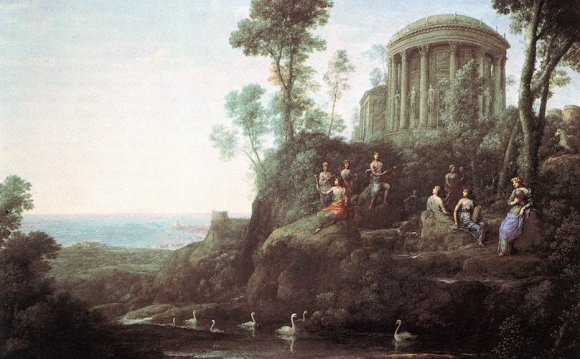
 English Landscape Style Guide
English Landscape Style Guide
Use this design sheet to help you create the perfect English landscape. You'll get ideas for color, décor, materials, plants and fabric. It is a great starting point for any landscaping project.
English Landscape Style Guide (PDF)
Plants for an English garden:
Hedges:
Yew
Hornbeam
Arborvitae
Boxwood
Shrubs and perennials:
Tardiva Hydrangea
Mophead Hydrangea
Knockout® rose
David Austin rose
Lavender
Catmint
Daylily
Hosta
The English design style is a study in contrasts. Neatly clipped boxwood hedges contain lively, riotous flowerbeds, and natural materials like limestone or thatch combine with formal brick for a pleasing contrast of natural with man-made, flowing with geometric.
Patrick Zaremba, an award-winning designer in Southeastern Michigan, is an expert at combining these elements. "The English garden relies heavily upon geometry, " he says. "If viewed from above, walkways are centered, and circles and rectangular shapes combine to give the landscape a sense of order." Yet Zaremba's built landscapes also have a softness to them from his use of flowering annuals and perennials. Here are his tips for designing effectively in this theme.
Dos:
- Do use hedges or walls to develop garden rooms. "By visually encapsulating different areas of the landscape, you can create an experience of discovery as you move through the garden, " explains Zaremba.
- Do emulate the materials of your home in your outdoor features. By repeating the use of materials like stone or brick in garden walls, columns, reflecting pools or fountains, you bring about a sense of unity between home and garden.
- Do select plants that change throughout the year. The best gardens "gravitate towards an expression of the seasons, " says Zaremba. Bulb displays like tulips are one of the first signs of spring, while summer blooms, fall foliage, and winter berries bring a sense of excitement and connection to the outdoor world.
- Do plant lavish displays of annual flowers. Annuals can bloom for five months at a time, which is something few perennials and shrubs can manage. Zaremba suggests using them in symmetrical plantings to draw the eye to a pathway, entry or focal area.
Don'ts:
- Don't use free-flowing, curvy borders. The English style uses geometric shapes like ovals, circles, rectangles or squares to organize the landscape. A curving border can make the tumbling English cottage garden plantings feel messy rather than exuberant.
- Don't choose a mixed cottage garden style of planting for every garden bed. It's the contrast between the riot of color and the refined calm of the surroundings that makes an English cottage garden planting stand out.
- Don't use too many focal points. Just as a woman would never put on all of her jewelry at once, focal areas are best when each is allowed to stand on its own. One or two well-chosen pieces make more of a statement than an abundance of them.
- Don't mix too many different hardscape materials. Select one or two classic materials like limestone, bluestone, brick or cobble, and repeat them throughout the landscape for a sense of continuity.
YOU MIGHT ALSO LIKE












